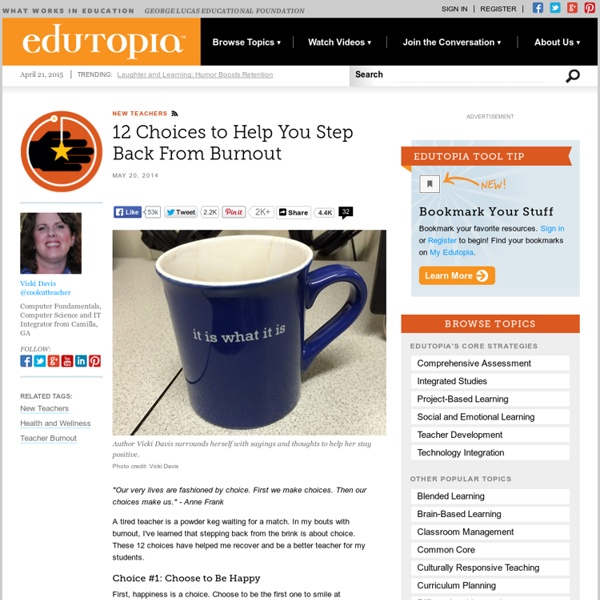Edutopia

The Nuts and Bolts of Explicit Modeling | Edutopia
Although many other methods of teaching are noteworthy -- such as case study, problem-based learning, and simulation -- many scholars agree that students need "careful, personal instruction with clear demonstrations in reading and writing", as well as in social studies, math, and science. (Note: NCTM membership is required to view this math link.) What can instructional modeling teach? Concepts Skills Performances Attitudes Behaviors Dispositions Thinking "Most human behavior," according to Stanford professor Alfred Bandura, "is learned observationally through modeling." Several instructional methods incorporate teacher modeling: I detail other modeling approaches below. Planning Tips Modeling necessitates meticulous planning. Right Before Modeling. . . I generally do three things in front of students before modeling a skill. 1. Example: "Yesterday, we learned how to add integers. 2. Example: "I'm going to teach you to/about __________. 3. Explicit Modeling After Modeling The payoff?
What learning strategies do "quick learners" follow?
learn new stuff Josh Kaufman, book "20 Hours
How to deal with difficult students FLIP IT! Teacher Strategies to Transform Challenging Student Behavior
This is the second blog in the series “Building Resilience in the Classroom.” Thanks to Apperson for sponsoring this series. Looking around your classroom, you know which students struggle to manage their emotions. There’s the student who at the slightest frustration crosses his arms and puts his head down on his desk. And the student who is so easily angered it seems impossible to anticipate her temper tantrums. The thing is, if we want to change children’s behavior, the first thing we have to change is our own. F: Feelings All behavior stems from feelings. For example, when your student Jon takes one look at the assignment you handed out and pushes the papers off his desk, crosses his arms over his chest and slumps in his chair, you can approach him and whisper, “I can see that you’re frustrated right now. ...” TIP: Rather than asking children “why” they did something (“Why did you push your papers off the desk?”) TIP: Tone is important during FLIP IT.
The 10 Most Important Work Skills in 2020
Share this infographic on your site! <a href=" src=" alt="Important Work Skills for 2020" width="500" border="0" /></a><br />Source: <a href=" The 10 Most Important Work Skills in 2020 Future Work Skills of 2020: Sources:
Related:
Related:



